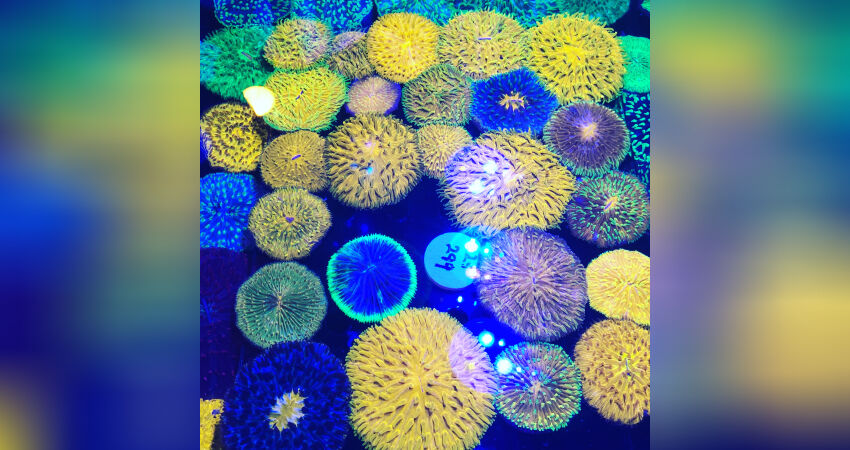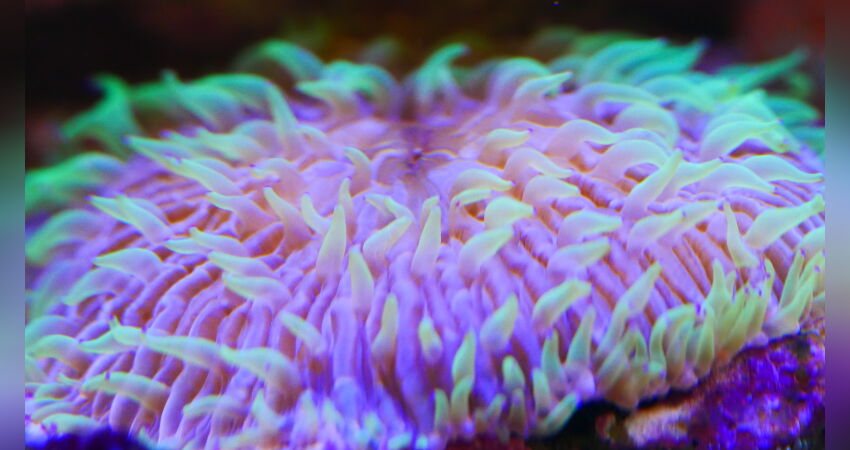FUNGIA Mushroom Corals

The family Fungiidae currently includes 15 genera with about 57 species. Although there are descriptions of fossils from the Cretaceous period, which are doubtful according to Veron, they are stony corals that only spread after the last great extinction about 65 million years ago.
From the archive
In the past, the first descriptions were only accessible to a small circle of scientists. In marine aquaristics it was then often the case that we in the aquarium had long known animals unknown to the taxonomists. I am thinking, for example, of my shrimps, which were later described as Saron inermisneu.
Science and interested laypeople moved closer together, a better exchange of information developed through the internet. Now, however, taxonomy has changed fundamentally. Due to the possible rapid analysis of DNA sequences, a constant change in species determinations is developing. Truly new unknown animals are usually only found in remote areas. New species are often delimited on the basis of DNA studies from those already described.
A nice example is Poecilia obscura a guppy that can no longer be distinguished morphologically from the normal guppy (Poecilia reticulata)! A few years ago it also reached the stony corals. In taxonomy, however, we are beginning to really put everything to the test and change it. However, today's scientists should be careful not to lose the "normal" people in the process. Otherwise, the enthusiastic hobbyists interested in nature, who can often tell a lot about the life of animals, will lose track and no longer follow.
This is where the specialist journals and online portals have an important task to provide professional information. Scientists so often forget to do just that. Even professionally maintained databases are often not up to date with the latest revisions. In the interest of all, it would make sense if revisions and new descriptions had to be published in principle and comprehensibly on the internet.
Happily, Arjan Gittenberger, Bastian T. Reijnen, Bert W. Hoeksema have done just that. After publication in 2010, the article was also put online in 2011 for general reading. In this comprehensive article, a lot has now changed in the taxonomy, biology and especially in the knowledge of the evolutionary history of fungal stony corals!
At the time, the family Fungiidae included 16 genera with about 57 species. Although there are descriptions of fossils from the Cretaceous period, which Veron says are dubious, these are stony corals that only spread after the last major extinction about 65 million years ago. They would even have to be relatively "young" species, because they are missing in the Atlantic. This is an indication that they were not widespread in the Thetys, the primordial ocean. While many other coral families are found in both the Atlantic and the Indo-Pacific. In this case, colonisation apparently took place via the remnants of the Thetys; there was still a gap between Africa and Europe for a long time, which allowed the exchange of species from the Indo-Pacific and Atlantic.

The remnant of this today is the Mediterranean, but in the distant future it will be closed by the African continent. Like many recent corals, the mushroom stony corals have their highest number of species in the so-called coral triangle, which extends from Indonesia (Bali/Java) in the west, via New Guinea in the east, up to and including the Philippines in the north. In the east, the distribution of mushroom stony corals almost only reaches the western to central Pacific. Only two species made it as far as the American continent. In the west, several have even reached the northern Red Sea.
How do you like this article?
Info
Author

Bookmark
Comments
Topics
Similar articles
- Farbigkeit hermatypischer Steinkorallen
- Nachtschicht im Meerwasseraquarium
- A visit to Whitecorals - the new coral farm
- Ernährungsstrategien bei Korallen
- Change in stony corals: Euphyllia becomes Fimbriaphyllia
- Fauna Marin CILI DIP!
- How a marine aquarium is created Part 38: When corals become entangled, the fight for settlement space
- Octocorallia - Achtstrahlige Korallen
- Pflege von azooxanthellaten Korallen
- Ernährung und Haltung von azooxanthellaten Gorgonien
Comments To the top
Please register
In order to be able to write something yourself, you must register in advance.





